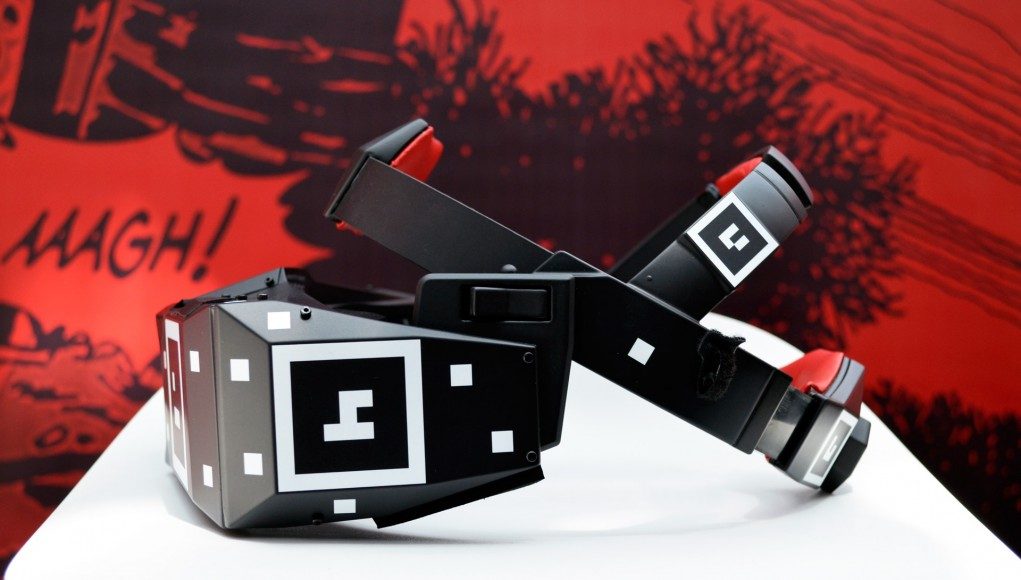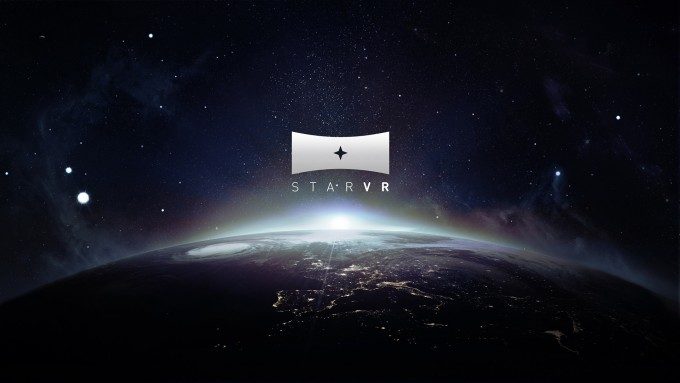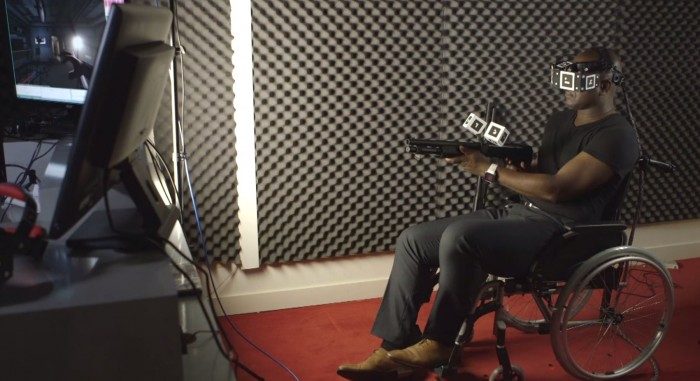Starbreeze announced at VRLA’s Winter Expo yesterday project ‘Starcade’ to bring their wide FOV, high resolution in-house developed VR headset to more consumers by way of public arcade style venues. Frank He caught up with their CTO Emmanuel Marquez to find out more.
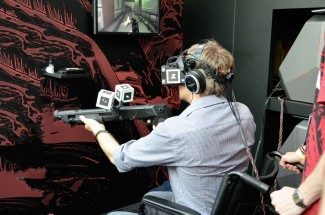
Starbreeze made a sizeable splash at E3 last summer when the unveiled their 210 degree, high resolution VR headset, born from project InfinitEye – the StarVR. Coupled with a dedicated VR experience based on their Walking Dead franchise, the headset received quite some attention. Since then however, things have gone a little quiet.
At VRLA yesterday, Starbreeze announced the next step for StarVR, a new initiative to open gaming venues with halls dedicated to StarVR powered virtual reality experiences. The name? Starcade.
Frank He, reporting for Road to VR, caught up with CTO Emmanuel Marquez to discover more about StarCade and the firms plans for virtual reality and StarVR going forward.
Now a second year UCLA undergraduate in a neuroscience program, Frank was born in Los Angeles and then raised in Canada, spending his high school years across the border in New York. His main interest is in technologies that enable immersive experiences, and Frank’s academic path is towards better understanding the brain, how it works, and then enabling us to do something for the betterment of life through that knowledge. Besides studying, Frank makes efforts towards supporting the VR community locally and online, where he regularly participates in discussions about VR.
Road to VR: Introduce me to what you’re doing with the StarCade.
Marquez: So we at Starbreeze believe that the VR experience needs to be very in a controlled environment for the coming two years. We also believe that it’s nice to be able to provide the premium experience to people that never tried VR before so they could really understand what VR is all about. So with our project StarVR and our themes Walking Dead and other titles coming on, we decided that we are going to open an arcade center of VR named project StarCade. And we will open our first place actually in Los Angeles during the Spring.
Road to VR: Let’s get a feel for the timeline here. When did you start getting the idea for StarCade?
Marquez: So it came actually where we did the E3 demo. It was so successful, and we put so much people in, and you know the ways which you just saw – we toured the RV around the US. So we have numbers. We know what people want, what they like, if it’s a good experience, if they are happy, and we are having a lot of fun doing that. People are really enjoying it. So this is where we got the idea and actually validated it, and now we are going to extend it.
Road to VR: Outside of the StarCade, what other plans do you have for your headset?
Marquez: So I’m going to tell you that the arcade – solving the arcade problem – getting a lot of people through the headset – is going to help us actually to push the bounderies of our headset to be work solid, a good reference design. And also you know providing a very premium experience, something different from what you could get at home, at least for now.
Road to VR: The headset that you’re going to use for StarCade – is it going to be improved from this one?
Marquez: Yes.
Road to VR: Can you say anymore specific?
Marquez: Well we will fix everything we don’t like in our headset without entering into any detail, to really get to the edge of what the headsets should be. But I don’t want to disclose more – it’s going to be quite soon.
Road to VR: This is a pretty big project. Do you have any plans on opening more arcades in areas around the world?
Marquez: Definitely, we want to open a pilot center first, maybe another one in Europe, maybe later in east countries. And when we find the best way for people to enjoy content on VR as a premium, yes we would love to extend that, for sure.
Road to VR: How big do you think your centers will be?
Marquez: Big in size or how much people we could get in, or?
Road to VR: Both!
Marquez: So, it depends because we are going to use that as a pilot. So we are going to try a room to room experience, we are going to try larger scale room, and so on and so on. So what I could say today is that it’s going to be a really laboratory pilot experience of 2016 and then we’ll know, we should meet after that, I will tell you.
Road to VR: So with the high field of view, and high resolution, you really need that high processing power. Where are you going to get that from?
Marquez: You know GPUs are getting better and better, and we are also optimizing our driver and the way it works to actually process this kind of resolution. And we – I have no… no real contraints there. I’m pretty sure we will get where we want to go over the year and get the power we need to run that.
Road to VR: And since you’re going for that sort of premium experience where you don’t necessarily need to be limited by –
Marquez: No no not at all. So we go as crazy as we want. Yes. And I think that’s a good part of it.
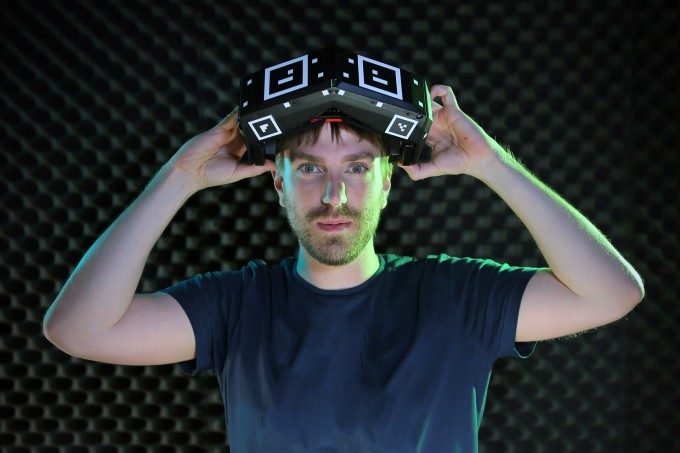
Road to VR: I am wondering, will the wheelchair [from the Walking Dead VR Experience] carry over to your arcades?
Marquez: It depends on the experience you will have so yes if we do the Walking Dead experience, we’d have a wheelchair. But remember, it will be agnostic so people will be able to come and choose from a catalogue, and play from a different kind of VR content they want.
Road to VR: Do you have any idea about how big that catalogue will be?
Marquez: We are waiting it. I can not announce things but it’s going to be big. I hope that to be one of the biggest available VR content nowadays.
Road to VR: For a long time we’ve all had that sort of idea of the Holodeck, right? So we have people, like HTC with the Vive, where you can walk around the whole room. Are you planning on doing something like that?
Marquez: Yeah for sure. We want people… I think there is nowadays with seated VR we are going to stand up, and then we are going to run in VR. This is my expectation. So we are interested in working on that.
Road to VR: What do you think about omnidirectional treadmills?
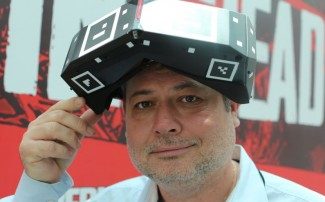
Road to VR: Do you know about redirected walking?
Marquez: So that’s an interesting concept, but I mean what we really have to do is to try what the killer app is from every sense… an experience you want to have. So I believe there is a killer application or game that should go with that that solves this issue.
And we will open the StarCade to any developers that want to come and try it.
Road to VR: [Is it correct that] you’re working with [Valve and] Steam?
Marquez: We are working with Steam because we have our Payday title, which is one of the big franchises, so yeah we work with Steam.
Road to VR: But what about SteamVR?
Marquez: Well, we interchange together. We are good friends but we have our own path. They have their own path. We walk together. At least, we try to use the API actually to be standard for our headset too.
Road to VR: So does that mean any compatability perhaps?
Marquez: Yeah so we will actually work and make it easier for developers to come to StarVR.
Road to VR: Say a developer is making a game for the Vive right now…
Marquez: So what we would like to do is to abstract actually the API so you could use it on any kind of device. And that’s really alignment with what Steam VR is.
So basically in the future, possibly, we could have like you know with home VR, we could play X game, then if you want to have a more premium experience-
You could go come to our center-
Road to VR: And play that same game.
Marquez: The same game or X game or what part of these games that are actually specifically made for premium.
Road to VR: And in terms of the premium experience, what sort of ideas do you think might not carry over to home VR, because the field of view isn’t as wide, or…
Marquez: I don’t think the field of view is a broker to go on just like it’s massive nowadays so you better get the big computer and everything but I think the home problem, it’s not only tied to us, it’s tied to anyone. It’s a very expensive set [of requirements], you need to have a large room and everything, so it’s just like easier to try it in centers.
Road to VR: How many years do you think it’ll be before the sort of premium experience you’re developing might get into homes?
Marquez: We are at the stone age of VR. We still have a lot of things to fix. What I believe is that your headsets we build today are too big. Not enough resolution. The power actually, it’s immense computers that need to that. So we will have to solve that. We will have to have a very light and thin headset, and it needs to be driven by your cellphone that sits in your pocket. So this is where we need to go – is to make something that’s really easy to consume by anyone.
We are really happy to be able to push actually our headset and make more people be able to try it, and we strongly believe in a premium experience.
Our thanks to Emmanuel Marquez for this time and to Frank He for conducting the interview.

